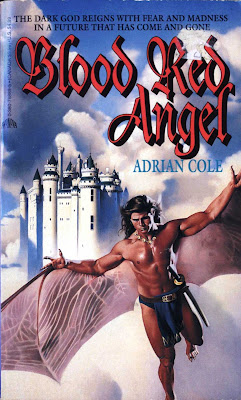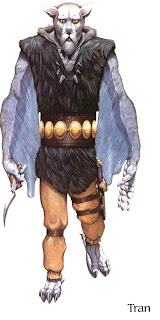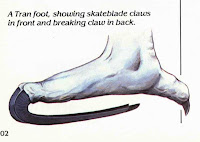Book Review: 'To Stand Beneath the Sun' by Brad Strickland
3 / 5 Stars
‘To Stand’ belongs to the sub-genre of sf in which a spaceman finds himself marooned (or imprisoned) on a planet where the sex roles are reversed, with womyn as the rulers and men relegated to a second-class status. Other examples of this approach include Cynthia Felice’s ‘Double Nocturne’, David Brin’s ‘Glory’, and Linda Steele’s ‘Ibis’.
The premise of ‘To Stand’ involves a colony starship named the Galileo, launched 5,000 years previously from a depleted and desperate Terra. The starship’s crew and passengers are in stasis until the ship reaches a suitable destination.
However, while still short of its original destination, a malfunction sends the ship into orbit around an earth-like planet named Kalea. A portion of the ship’s stasis chambers are jettisoned down onto the planet below, and those passengers who survive the landings establish a colony, albeit one endowed with a medieval level of technology.
As the narrative commences a geologist named Tom Perion, still in stasis within his chamber aboard the Galileo, is abruptly ejected from the ship; his chamber splash-lands in the oceans of Kalea, where, by good fortune, a sailing ship rescues him.
Perion is bewildered to learn that his rescuers are an all-female crew. It turns out that in the 1700 years since the arrival of the first colonists jettisoned onto the surface of Kalea, various sociological and demographic events have combined to render the population skewed towards a preponderance of women.
Men are considered too precious to engage in traditionally manly pursuits, and are relegated to lives as sybarites, tasked with the not altogether disagreeable duties of fathering children from rotating harems of shapely young women.
Author Strickland doesn’t veer into Gor Fanboy territory, and keeps his narrative centered on Tom Perion’s efforts to find a place in this female-dominated society, and to rescue the Galileo, still circling Kalea, albeit in a dangerously low orbit.
Perion’s hopes rest on discovering if other stasis pods, landed elsewhere on the planet, have functioning electronics that will allow him to contact the mother ship, revive its crew, and import the ship’s technology into the increasingly fractious society ruling Kalea.
But, not only does the stranded spaceman have to convince his skeptical female rescuers that the ‘Silver Star’ crossing the heavens each night is in fact a spaceship, built and flown from a planet light-years away, but Perion’s entanglement in a conflict between rival trade houses triggers a blood feud.
Can TPerion find an intact stasis pod amid the inhospitable wastes of northern Kalea ? And will he reach the pod before a team of mercenaries finds, and eliminates, he and his female companions ?
‘To Stand’ is a very readable sf novel. Main character Tom Perion, while subject to occasional moments of poor judgement, maintains a necessary self-deprecating attitude even as he maneuvers his female overseers into complicity with his plans to contact the Galileo.
While the middle segments of the novel tend to drag a bit, as author Strickland gives way to overlong exposition on various details of Kalean society, the latter third of the novel consists of a prolonged, well-paced chase sequence.
‘To Stand Beneath the Sun’ is worth picking up from the used book shelves.






































































